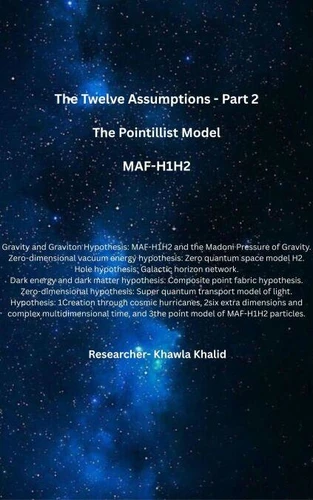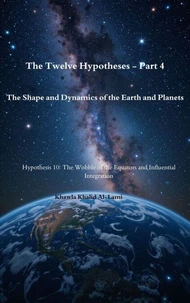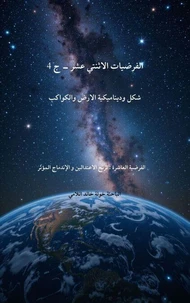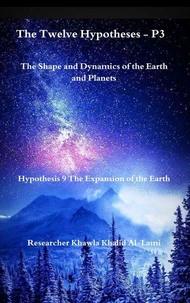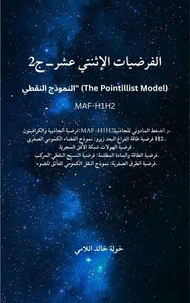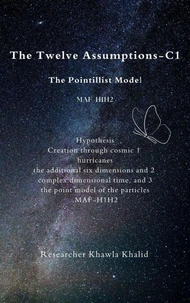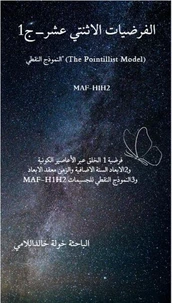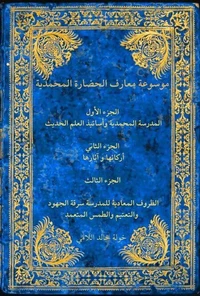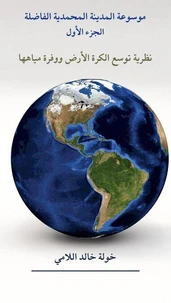Nouveauté
The Twelve Assumptions - Part 2 The Pointillist Model MAF - H1H2
Par :Formats :
Disponible dans votre compte client Decitre ou Furet du Nord dès validation de votre commande. Le format ePub est :
- Compatible avec une lecture sur My Vivlio (smartphone, tablette, ordinateur)
- Compatible avec une lecture sur liseuses Vivlio
- Pour les liseuses autres que Vivlio, vous devez utiliser le logiciel Adobe Digital Edition. Non compatible avec la lecture sur les liseuses Kindle, Remarkable et Sony
 , qui est-ce ?
, qui est-ce ?Notre partenaire de plateforme de lecture numérique où vous retrouverez l'ensemble de vos ebooks gratuitement
Pour en savoir plus sur nos ebooks, consultez notre aide en ligne ici
- FormatePub
- ISBN8232293468
- EAN9798232293468
- Date de parution15/09/2025
- Protection num.pas de protection
- Infos supplémentairesepub
- ÉditeurHamza elmir
Résumé
The book "The Twelve Hypotheses" seeks to present a unified model of the universe, bridging the gap between general relativity and quantum mechanics. This model is based on the idea that the universe is not the product of a random explosion, but rather a harmonious fabric of point particles, called MAF-H1H2. These points, which differ in their energy levels, form the basis of all cosmic phenomena.
The book argues that gravity is not a fundamental force, but rather the product of "matter pressure, " a dynamic effect arising from the interactions of these particles, which explains its weakness. It also explains vacuum energy as energy latent in the zero dimension, which is the source of all energies. Black holes are not considered static singularities, but rather dynamic entities for recycling matter and energy.
The research suggests that dark matter and dark energy may be the product of complex interactions within this point-like fabric, and that matter and antimatter balance each other out at the quantum level, with the observed imbalance potentially explained by slight variations in the vacuum. The model adopts the principles and introduces the concept of "zero paths" as channels for instantaneous particle transport, transcending the known laws of time and space, and offers an explanation for many phenomena such as the double-slit experiment and the photoelectric effect based on the elastic nature and geometric memory of these particles.
This work represents a call to rethink the basic assumptions about the universe and to present a unified philosophical and scientific vision that may open new horizons for research in theoretical physics.
The book argues that gravity is not a fundamental force, but rather the product of "matter pressure, " a dynamic effect arising from the interactions of these particles, which explains its weakness. It also explains vacuum energy as energy latent in the zero dimension, which is the source of all energies. Black holes are not considered static singularities, but rather dynamic entities for recycling matter and energy.
The research suggests that dark matter and dark energy may be the product of complex interactions within this point-like fabric, and that matter and antimatter balance each other out at the quantum level, with the observed imbalance potentially explained by slight variations in the vacuum. The model adopts the principles and introduces the concept of "zero paths" as channels for instantaneous particle transport, transcending the known laws of time and space, and offers an explanation for many phenomena such as the double-slit experiment and the photoelectric effect based on the elastic nature and geometric memory of these particles.
This work represents a call to rethink the basic assumptions about the universe and to present a unified philosophical and scientific vision that may open new horizons for research in theoretical physics.
The book "The Twelve Hypotheses" seeks to present a unified model of the universe, bridging the gap between general relativity and quantum mechanics. This model is based on the idea that the universe is not the product of a random explosion, but rather a harmonious fabric of point particles, called MAF-H1H2. These points, which differ in their energy levels, form the basis of all cosmic phenomena.
The book argues that gravity is not a fundamental force, but rather the product of "matter pressure, " a dynamic effect arising from the interactions of these particles, which explains its weakness. It also explains vacuum energy as energy latent in the zero dimension, which is the source of all energies. Black holes are not considered static singularities, but rather dynamic entities for recycling matter and energy.
The research suggests that dark matter and dark energy may be the product of complex interactions within this point-like fabric, and that matter and antimatter balance each other out at the quantum level, with the observed imbalance potentially explained by slight variations in the vacuum. The model adopts the principles and introduces the concept of "zero paths" as channels for instantaneous particle transport, transcending the known laws of time and space, and offers an explanation for many phenomena such as the double-slit experiment and the photoelectric effect based on the elastic nature and geometric memory of these particles.
This work represents a call to rethink the basic assumptions about the universe and to present a unified philosophical and scientific vision that may open new horizons for research in theoretical physics.
The book argues that gravity is not a fundamental force, but rather the product of "matter pressure, " a dynamic effect arising from the interactions of these particles, which explains its weakness. It also explains vacuum energy as energy latent in the zero dimension, which is the source of all energies. Black holes are not considered static singularities, but rather dynamic entities for recycling matter and energy.
The research suggests that dark matter and dark energy may be the product of complex interactions within this point-like fabric, and that matter and antimatter balance each other out at the quantum level, with the observed imbalance potentially explained by slight variations in the vacuum. The model adopts the principles and introduces the concept of "zero paths" as channels for instantaneous particle transport, transcending the known laws of time and space, and offers an explanation for many phenomena such as the double-slit experiment and the photoelectric effect based on the elastic nature and geometric memory of these particles.
This work represents a call to rethink the basic assumptions about the universe and to present a unified philosophical and scientific vision that may open new horizons for research in theoretical physics.

